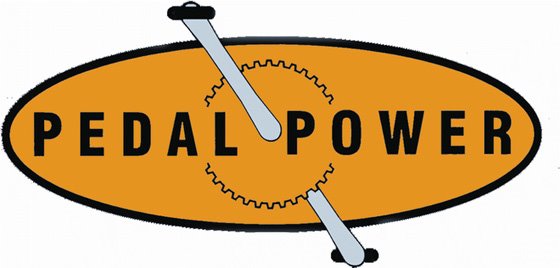
Pacelines can be either single or double (fat chance of getting a double going on most roads in Eagle County!). In a single paceline, everyone lines up behind the first rider, who maintains a constant speed. The rotation occurs when the front rider pulls off to the side and drifts to the back of the line. The next rider then sets the pace. Riders stay on the front from a few seconds to several minutes. This type of paceline has the advantage of requiring less road space.
A double echelon, also known as a rotating paceline, contains two lines of riders side by side, continuously in motion (when we use to have the Wednesday Worlds out of Colorado Bike Service we got these going on I-70). One line goes slightly faster than the other does. Let's say you're the lead rider in the faster line. You should cross over to the slow line after passing the front wheel of the rider beside you (the front rider in the slower line). Then you drift back with the others in the slow line. When the final position is reached (back of the line), slide onto the back wheel of the last rider in the fast line.
In strong crosswinds, riders become offset like geese flying south for the winter, forming what is known as an echelon. They also overlap wheels, which means a mistake in which wheels touch can take down the whole bunch. The width of this type of paceline also requires a completely traffic-free road (DO NOT RIDE LIKE GEESE ON HIGHWAY 6).
Here are some additional tips for becoming a more efficient paceline rider:
Get used to following closely to the rider in front of you to get the benefit of the draft. You use much less energy following a cyclist than riding out in the wind by yourself. Top riders feel comfortable riding within inches of the wheel in front. In a rotating paceline, stay as close together side to side.
Put weaker riders behind stronger ones. A paceline is a team. It's only as strong as its weakest member is, so help that person.
Ride smoothly and predictably. Never accelerate or brake quickly. If you are running up on the wheel in front, slow down by moving into the wind slightly. Avoid hitting the brakes.
Maintain a constant speed when you get to the front by glancing at your cycle computer. The tendency for new riders is to jump and pick up the pace.
If the rider at the front charges off (we all know a few strong riders who will do this), let that person go and hold your speed. If you're in a double echelon, move over and fill the hole just created.
If you tire, sit out as many turns as necessary at the back. Let riders coming back know that you are resting, and give them space to move in ahead of you.
As the speed increases, gaps may develop because riders can't hold the wheel ahead or miss the last wheel as they try to get back on the end of the paceline. Strong riders need to fill these gaps in order to preserve the flow, even if it means jumping across and moving back up the line early.
Reduce your effort up hills because the draft is less. Conversely, accelerate through more quickly on descents so everyone won't stack up from behind.
Thanks for info - Edmund R. Burke, Ph.D.


5 comments:
Wow that hill looks steep!! nice to see kirchner sucking wheel
Bill...ridin' with the ladies!!
....and Kirchner!
It is also important to be a smooth rider, no sudden movements i.e. accelerations and decelerations. If you get out of the saddle DO NOT change your speed, you may need to up shift to keep a constant pace. Watch the spitting and farmer blows, in other words don’t be an ass or you will not be invited to play in any of the reindeer games. Your loving pace line buddy……me.
Post a Comment